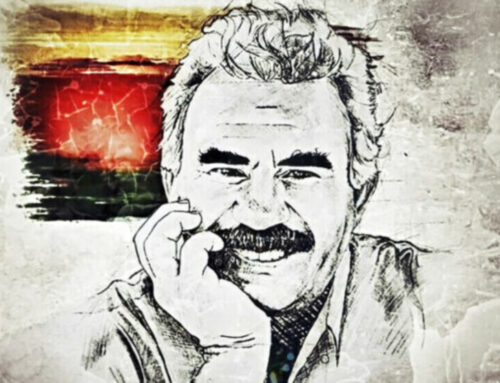Can a TV series accurately portray the Rojava Revolution?
Can a TV series accurately portray the Rojava Revolution?
- Date: February 5, 2021
- Categories:Rights

- Date: February 5, 2021
- Categories:Rights
Can a TV series accurately portray the Rojava Revolution?
“A female fighter receives the news of her friend’s death in the midst of clashes, and she feels weak and seeks solace in the arms of a French man. In other words, it sends the message that “even if women lead a revolution, they will still need a man”. However, the experience of the Kurdistan women’s revolution shows the exact opposite. The TV series barely acknowledges this,” writes Elif Kaya for Yeni Özgür Politika.
There are many books, movies, and documentaries on the unique and extraordinary political situation in Rojava (North and East Syria), ranging from the war against the Islamic State of Iraq and Syria (ISIS) to the revolution led by Kurdish women in Rojava. The Rojava Revolution is a worldwide revolution that is still ongoing. It has the potential to be the subject of books and movies, just like other revolutions.
So far, works based on the Rojava Revolution often deform the facts or create a biased perception of the reality. “Daughters of the Sun”, “Sisterhood of Arms”, and “No Man’s Land” are examples. “No Man’s Land”, produced by the joint French-German channel ARTE, is a film series about the war against ISIS in Rojava. The problems start with the title: “No Man’s Land”. Generations of families and communities lived in these lands for years.
For thousands of years, people harvested their crops, had children, and buried loved ones in these lands. Despite the Crusades, the Mongol invasion and the plundering of the Turkic tribes, people did not leave their homeland and continue to live there. How is it possible to define these lands as “no man’s lands”? This is to create a perception or an approach that ignores the forces that won a great battle against ISIS. In the series, the war is portrayed as if it was between internationals from different parts of Europe. People who paid a price for their freedom were shown in a superficial way.
The most distinctive part of the Rojava Revolution is the combination of democratic autonomy and women’s liberation. The connection between the resistance and the ideology of women’s freedom has been ignored. Even if a woman makes a revolution or defeats a brutal organisation like ISIS, she is weak and in need of protection by men (!). A female fighter receives the news of her friend’s death in the midst of clashes, and she feels weak and seeks solace in the arms of a French man. In other words, it sends the message that “even if women lead a revolution, they will still need a man”. However, the experience of the Kurdistan women’s revolution shows the exact opposite. The TV series barely acknowledges this.
Recently it was announced that Hillary Clinton and her daughter were preparing to adapt the book “The Daughters of Kobanê” for television. It is impossible not to worry about how a politician, who played a determining role in the politics of that period, could explain the Kobanê resistance. For example, will this film address who financed the ISIS attacks on Kobanê? Will it express regret or self-criticism for what has been done to the Kurdish people? On behalf of Arîn Mirkan, will it adhere to the spirit of Kurdish women’s liberation? Even though we know it will not, it’s still a curiosity. We can’t help but ask.








Leave A Comment